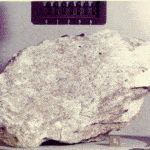Cal State San Marcos is a member of a new research team that will collaborate on research into the intersection of space science and human space exploration as part of NASA’s Solar System Exploration Research Virtual Institute (SSERVI).
The CSUSM team is one of eight new research teams that will be supported for five years at a combined total of about $10.5 million per year, funded by NASA’s Science and Human Exploration and Operations Mission Directorates.

CSUSM is part of a team called Interdisciplinary Consortium for Evaluating Volatile Origins (ICE Five-O), led by Jeffrey Gillis-Davis at the University of Hawaii at Manoa in Honolulu.
It also includes researchers from Washington University in St. Louis, San Francisco State, Johns Hopkins and NASA’s Johnson Space Center in Houston.

The lead researcher from CSUSM is Gerardo Dominguez, an associate professor of physics, who will be receiving an $837,000 grant for the project.
The ICE Five-O team will focus on remote sensing of airless bodies and how their surfaces weather in space. It also will model the physical, chemical and isotopic signatures of volatiles trapped in craters near the moon’s pole.
“This grant will enable us to take a multidisciplinary approach to understanding several important questions about ice on the moon, including its origin,” Dominguez said. “These questions are important scientifically and for preparing humans to explore the solar system.

“We will also address questions about how to ensure that the scientific information encoded within precious samples of lunar crater materials that are brought back to Earth is preserved. This work will be important for planning the next lunar sample return missions, which have not occurred since the last Apollo mission in the early 1970s.”
The new teams will join four current SSERVI teams to conduct fundamental and applied research about the moon, near-Earth asteroids and the Martian moons Phobos and Deimos and their near-space environments. Work will take place in cooperation with U.S. and international partners.
The new SSERVI teams were selected via peer review from a pool of 24 competitive proposals.
Based and managed at Ames Research Center in Silicon Valley, SSERVI was created in 2014 as an expansion of the NASA Lunar Science Institute. It supports scientific and human exploration research at potential future human exploration destinations under the guiding philosophy that exploration and science enable each other. Its members include academic institutions, nonprofit research institutes, commercial companies, NASA centers and other government laboratories.
About California State University San Marcos
Building on an innovative 29-year history, California State University San Marcos is a forward-focused institution, dedicated to preparing future leaders, building great communities and solving critical issues. Located on a 304-acre hillside overlooking the City of San Marcos, it is the only public four-year comprehensive university serving North San Diego, Southwest Riverside and South Orange counties.
The University enrolls 17,000 students. With approximately 2,000 employees, the institution is a Great College to Work For® (The Chronicle of Higher Education). As a recipient of the annual HEED Award since 2014 — a national honor recognizing U.S. colleges and universities that demonstrate an outstanding commitment to diversity and inclusion — CSUSM is committed to creating a diverse and inclusive environment.



















